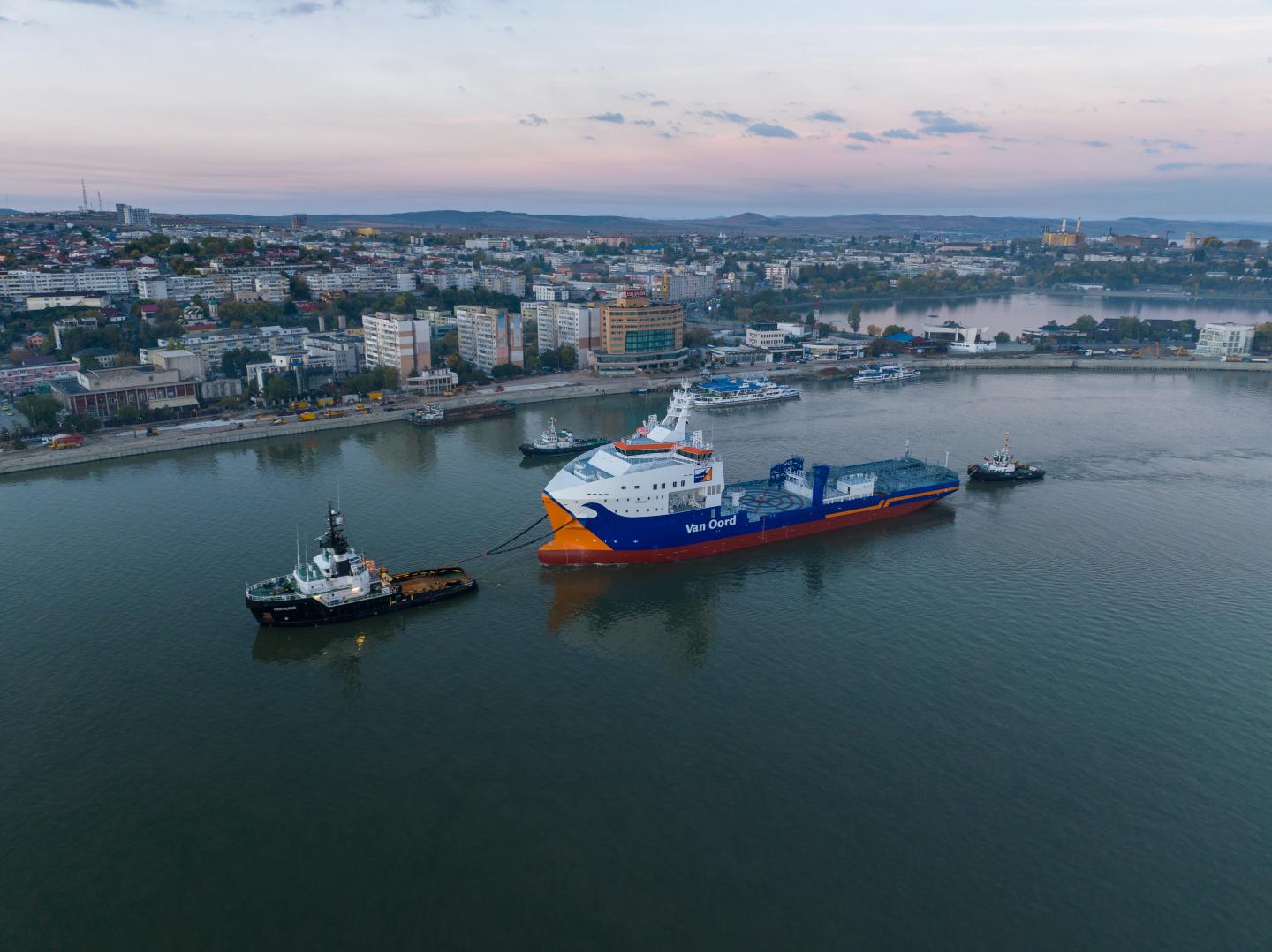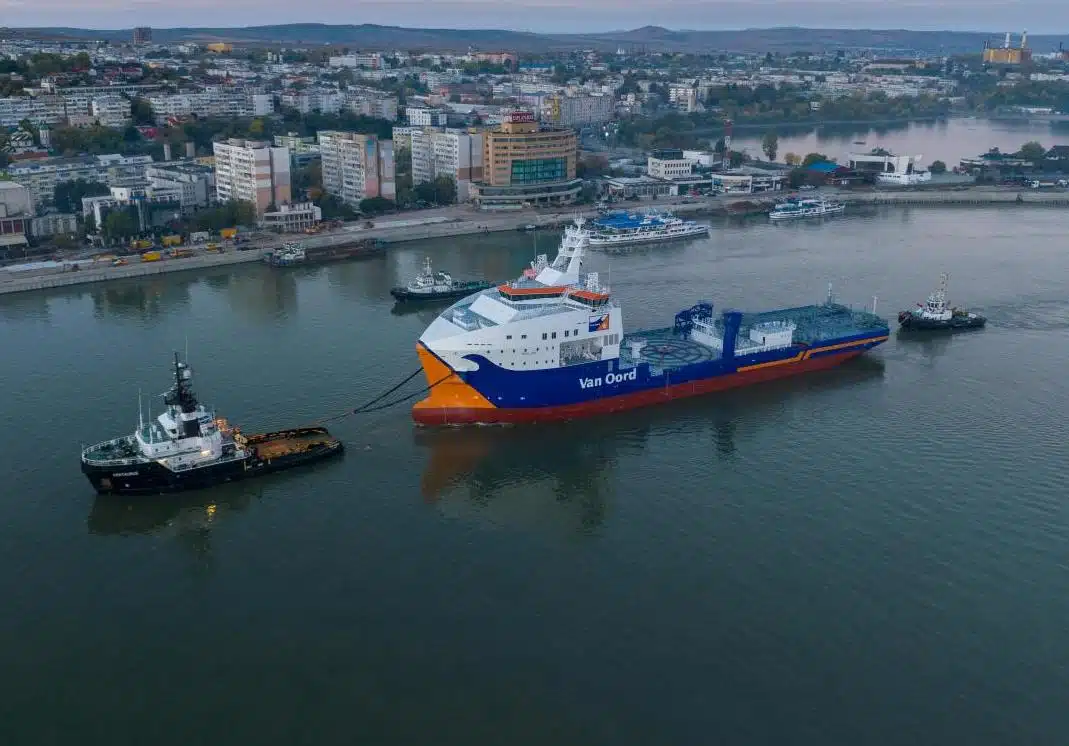Van Oord’s new cable-laying vessel Calypso is on its way to the Vard Brattvaag yard in Norway for construction finishing, after a successful and safe launch at the Vard Tulcea shipyard in Romania, last week. This next-generation, custom-built vessel will be a key strategic addition to Van Oord’s offshore wind fleet, being equipped with the latest sustainable technologies. Construction is progressing well on schedule and the vessel is expected to be operational from the end of 2023 on.
The Calypso is Van Oord’s second cable-laying vessel in addition to the Nexus. It measures 131 metres in length and 28 metres across the beam and will be Dutch flagged. The new DP2 vessel will not only be fitted with a carousel on deck but also with a second, below-deck cable carousel, with a total cable-carrying capacity of 8,000 tonnes.
Offshore wind is a key contributor to achieving climate change targets around the world. By investing in state-of-the-art sustainable technology, Van Oord contributes to the energy transition, making offshore wind more competitive. The Calypso will mainly be deployed to install inter-array grid and export cables for offshore wind projects, including high-voltage direct current (HVDC) cables. Van Oord’s highly innovative cable trenchers can also be operated from the vessel.


Sustainable technology
The Calypso has been designed with the latest sustainable technologies in order to reduce its carbon footprint during operations and when on port standby. Apart from the ability to run on biofuel, this hybrid vessel has future-ready engines with built-in flexibility to anticipate e-fuels. It will have a large battery pack, a shore supply connection, and a state-of-the-art energy management system. This sustainable set-up will result in a more energy-efficient vessel, with significantly reduced CO2, NOx and SOx (carbon, nitrogen and sulphur oxides) emissions.











